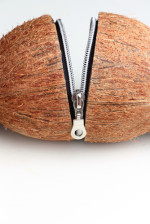
Diastasis Recti (abdominal divide) What it is, how to find out if you have one and 8 great ways to manage and improve it
What is a Diastasis? Diastasis is a stretch in the connective tissue running down the middle of your tummy. This connective tissue joins the rectus (“six-pack muscle”) in the centre. This stretch in the tissue is quite normal during pregnancy but in some women it doesn’t resolve afterwards. The tissue remains stretched and leaves a gap between the rectus muscle. If the gap is more than 2-3 fingers wide it is termed a Diastasis of Recti. So what? Well importantly, it may cause weakness in the core muscles and that is bad news if you don’t want to have back pain, pelvic pain, urinary incontinence or pelvic organ prolapse at some stage postnatally.
How do I know you have a diastasis?
Not everyone with a pot belly and weakness around their middle will have a diastasis. You may just have some weakness in that area and be standing in a “still pregnant “ posture ie. pelvis tipped forward (more about alignment below). You can test for a diastasis with your fingers. Lie on your back with knees bent, lift your head and shoulders from the floor. Use your fingers to feel the tummy at your belly button level, you may have to dig in gently, a bit. See if you can find the borders of the rectus muscle and then see how many fingers you can fit across the gap (if any). You can look at this video for a demonstration. Someone with a diastasis may notice stretched, crinkly skin in that area when standing or testing like above. If you have trouble checking it, a post-natal physiotherapist or qualified postnatal trainer can test it for you.

Ok, I do have a diastasis what can I do about it?
# 1- don’t panic It’s a common condition and it is useful not to obsess about the size of the gap. Your goal is to strengthen up from the inside out to create a strong and functional core and closing that gap is going to be a bonus. Also, it is not all about the width, in fact it the depth of the gap which is more significant as this tells us what the integrity of the connective tissue is like across the gap and if it is going to make a good bridge to give you a strong and functional abdominal wall. It`s important to also mention umbilical hernias at this point. That’s when some of the abdominal organs poke out through a particularly weak area of the connective tissue. If you feel anything hardish poking through the gap- go to your GP as that may need surgical repair. Right! That’s hernias out of the way, back to the diastasis and the solutions available to you
#2 Don’t wear a corset as a long-term solution Some people or websites have suggested splints or a corset that wraps around your middle and literally holds the sides of the gap together to allow it to apparently heal. It may be good for a little while in the early postnatal days to give you some security around the weak area. BUT, the problem with this is that that stretched connective tissue between the gap isn’t going anywhere just because you have pulled its sides together with a splint. Instead we need to create and build some tension in that tissue to help give your body stability. So a splint isn’t going to be much use in the long-term.
#3 Don’t do sit-ups or planks. Sit ups or planks (without a good pre-contraction of your deep core muscles like pelvic floor) will only exert an outward force on the abdominals, doming your abdominals, worsening your diastasis and causing downwards force on your pelvic floor. So they are not good for tackling a diastasis.
#4 Good standing alignment “When are you expecting”. Not a question anyone likes to hear when they are not pregnant. But, sometimes our posture forgets how we held ourselves before we were pregnant. If you are still standing with your ribcage hanging back and hips thrusted forward like a typical “pregnant alignment” (we do this a lot when holding the baby on our chest) it is going to unzip an already open zipper at the front. This incorrect alignment will also make it difficult for you to engage the deep core muscles and get them working in synergy. If you want to heal your diastasis you have got to learn how to stand right and keep standing right. So try to keep your ribcage like a straight cylinder stacked over your neutral pelvis. (you can check this sideways in a mirror). Practice with and without holding your child. This way you will be firing those deep muscles in no time and allowing your diastasis to heal #5 Breath! And “exhale”. Not exhaling properly when lifting something or doing the effort part of an exercise will cause a build-up of pressure inside the abdomen which will push outwards against the gap. SO don’t forget the “blow before you go” mantra. Lift your pelvic floor and exhale on effort will ensure you are protecting your abdominal gap and pelvic floor from downward pressure
#6 Let your belly go You are worried about the gap so you may feel like sucking in your belly is a good thing to do. Mmm no, Sucking in your abs the whole time or “belly gripping” will just increase the abdominal pressure and that will push down on your pelvic floor or prevent your core working as a team.
#7 Release Some tension in tight superficial muscles like your obliques, pecs or hip flexors may be hindering your progress. They can
be literally pulling you into that awkward alignment that exacerbates a diastasis, despite your hard work connecting and strengthening those deep core muscles. Try some stretches and releases with the help of a tennis ball or a foam roller if needed, to see if you can find any tight spots.
#8 Core Strengthening Starting slowly and building up from the inside out, is the best way to restore your core without compromising the abdominal gap. Find your pelvic floor and get the hang of lifting it as you exhale and releasing it fully as you inhale. This will start building the foundations of your core and help you to connect to the deep abdominals. Then you start to add tension to the abdominals with this connection in place. Postnatal Pilates is a great way to start this, then you can add in more functional everyday life movements like squatting, lunges and step ups. You can add resistance from your own body weight, then bands or light free weights. Don’t forget about the exhale on the effort to keep the abdominal pressure low. Keep your alignment in mind too.
Good look with your journey. Remember if something doesn’t feel right, get in touch with Maternity Physio. The Mummy MOT is an ideal way to assess your postnatal body including the abdominals and give you the right guidance to get you on track
